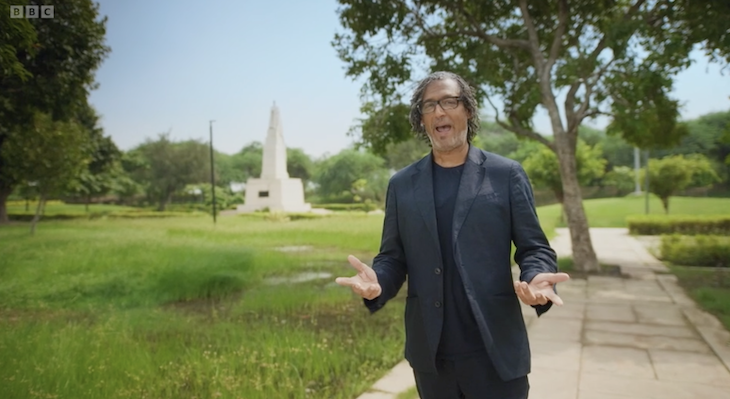The war in Gaza has resumed with a new intensity, but it would be a mistake to see this as a straightforward continuation of what we have witnessed over recent months. This phase of the conflict suggests a shift in strategy – one shaped by Israeli military recalculations, a more accommodating US administration, and the failure of ceasefire negotiations to yield further meaningful results.
Washington and Jerusalem are now aligned in their broader strategic objectives
For some weeks, Israel has found itself in a strategic deadlock. The lull in fighting had given Hamas time to reorganise, rearm, and reinforce itself, while the humanitarian aid flowing into Gaza ended up helping to finance the terrorists as they seized it and sold it to their own people. Meanwhile, hostage negotiations stalled, and Hamas appeared increasingly emboldened, confident that Israel would hesitate before resuming full-scale military action. That assumption proved to be a miscalculation.
The appointment of the new IDF Chief of Staff Eyal Zamir has coincided with a notable shift in Israeli operations. Israeli ground forces are returning to key areas, including Shaboura in Rafah yesterday. The military is also strengthening control over strategic corridors, including the Netzarim and Philadelphi corridors. Israel itself is under fire again, both from rockets launched by Palestinians in Gaza and from Houthi missiles launched from Yemen (which temporarily stopped flights from landing at Bengurion Airpot on Thursday).
At the same time, high-profile Hamas operatives have been eliminated in this resumed military action. Among them was Rashid Jahjouh, head of Hamas’ General Security Forces, a unit responsible for identifying and eliminating so-called ‘collaborators’, securing Hamas’ leadership, and shaping its internal propaganda. Another key figure, Ayman Atsila, who oversaw security in Khan Younis, was also killed, along with Ismail Abd al-Aal, a senior figure in Islamic Jihad’s weapons smuggling network.
Israel’s military campaign is unfolding against the backdrop of a more permissive US stance. Unlike the previous administration, which sought to restrain Israeli military actions, the Trump administration has taken a markedly different approach. Washington has unblocked military supplies to Israel, eased diplomatic pressure, and – perhaps most significantly – taken direct military action in the region.
Since Saturday, US forces have conducted over 60 strikes on Houthi targets in Yemen, targeting key figures involved in drone operations and weapons logistics. Additionally, American reinforcements, including air defences, are expected to arrive in the Middle East in the coming weeks.
These moves suggest that Washington and Jerusalem are now aligned in their broader strategic objectives. This new reality – where American military pressure is being exerted on Iran-backed forces in Yemen while Israel intensifies its ground campaign in Gaza – suggests there may be more to come soon.
For Hamas, the deteriorating military situation may have placed greater urgency on hostage negotiations – its last remaining leverage. In recent days, Egypt has proposed a new ceasefire framework, attempting to bridge the gap between Cairo’s initial plan, which involved releasing one Israeli-American hostage and five bodies, and the US-backed Witkoff plan, which called for the release of half of the remaining living hostages and half the bodies of those killed and held by Hamas. It remains to be seen whether the intensified fighting is part of a broader effort to pressure Hamas into a dealm– or if the negotiations will once again collapse into mutual recriminations.
The renewed fighting has also reignited debates over humanitarian conditions in Gaza, with David Lammy accusing Israel of breaking international law, before rowing back on this. Testimony from former hostages tells a different story. Eli Sharabi, an Israeli captive held for 491 days, addressed the United Nations, offering a harrowing account of his time in captivity: ‘491 days. That’s how long I starved, was bound, and begged for my humanity. In all that time, not a single person in Gaza helped me. Not one,’ he said. His words challenge the widely accepted narrative that Gaza’s civilian population is merely caught in the crossfire.
More strikingly, Sharabi described how humanitarian aid meant for civilians was systematically diverted by Hamas:
I saw Hamas fighters carrying UN aid boxes into tunnels – dozens and dozens of them. These supplies, funded by your governments, fed the terrorists who tortured me and murdered my family.
Such allegations raise difficult but necessary questions: If aid is being co-opted by Hamas, does continued delivery merely perpetuate the cycle of war? And if so, what alternative mechanisms exist to ensure genuine humanitarian relief?
The events of this week suggest that Israel’s approach to Gaza has fundamentally changed. Whether this shift leads to a long-term Israeli military presence, a decisive defeat for Hamas, or another protracted round of conflict remains uncertain.
Meanwhile, diplomatic efforts continue. The Hamas delegation’s arrival in Cairo may signal a breakthrough, or it may simply be another exercise in political manoeuvring. And as American military forces reinforce their presence in the region, is the US preparing for a longer and deeper entanglement in Middle Eastern conflicts, or is it merely seeking to contain the immediate threats posed by Iran-backed groups like the Houthis? For now, the war moves forward, shaped by shifting strategies and unresolved questions – and with no clear resolution in sight.








Comments